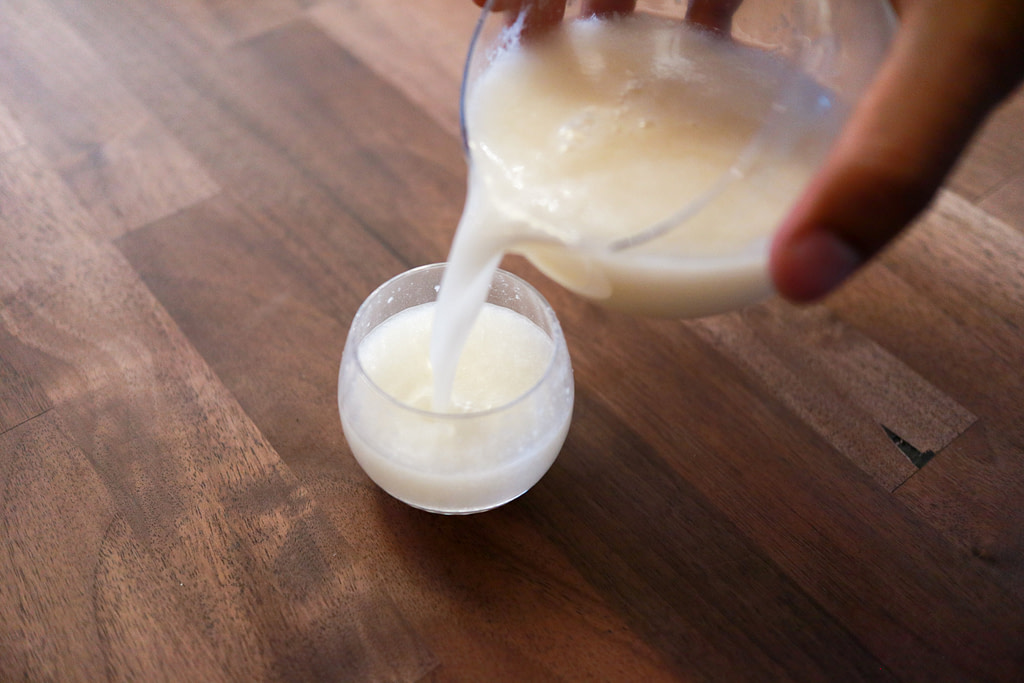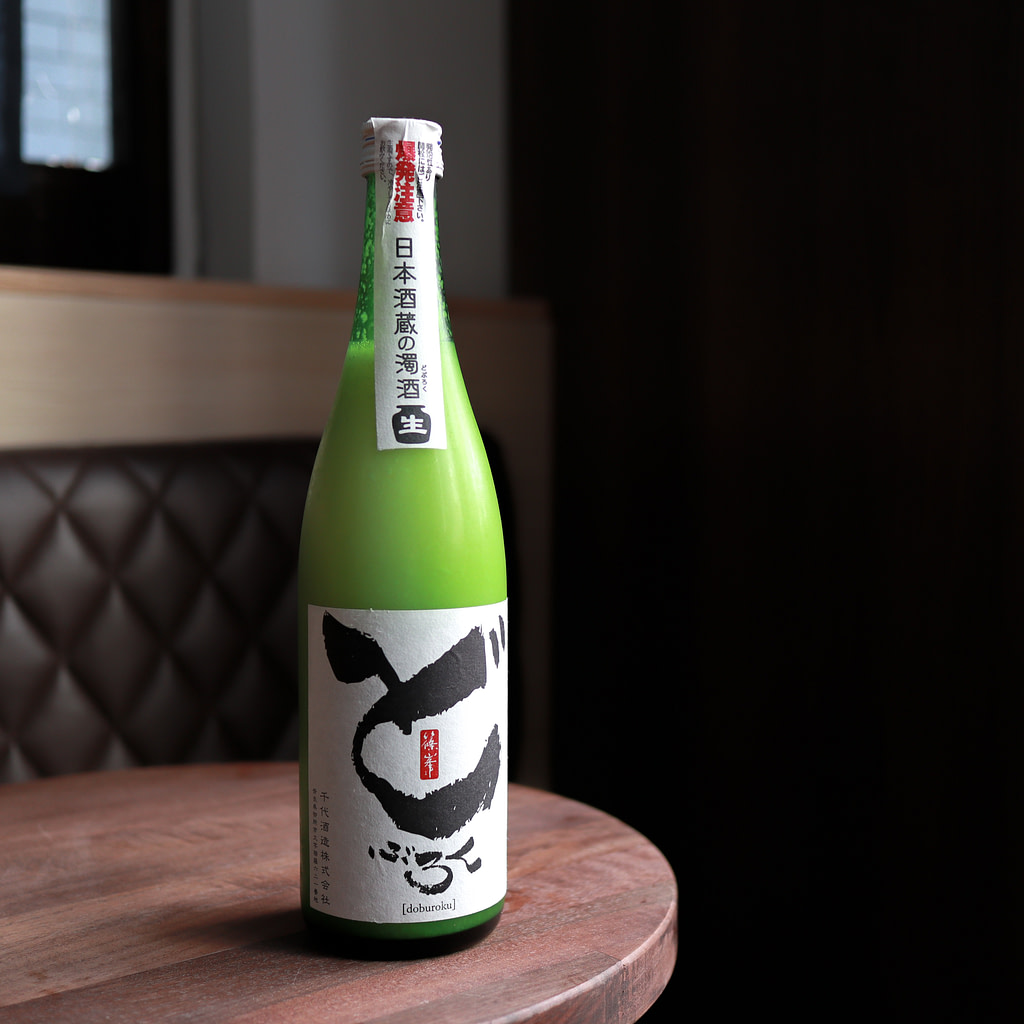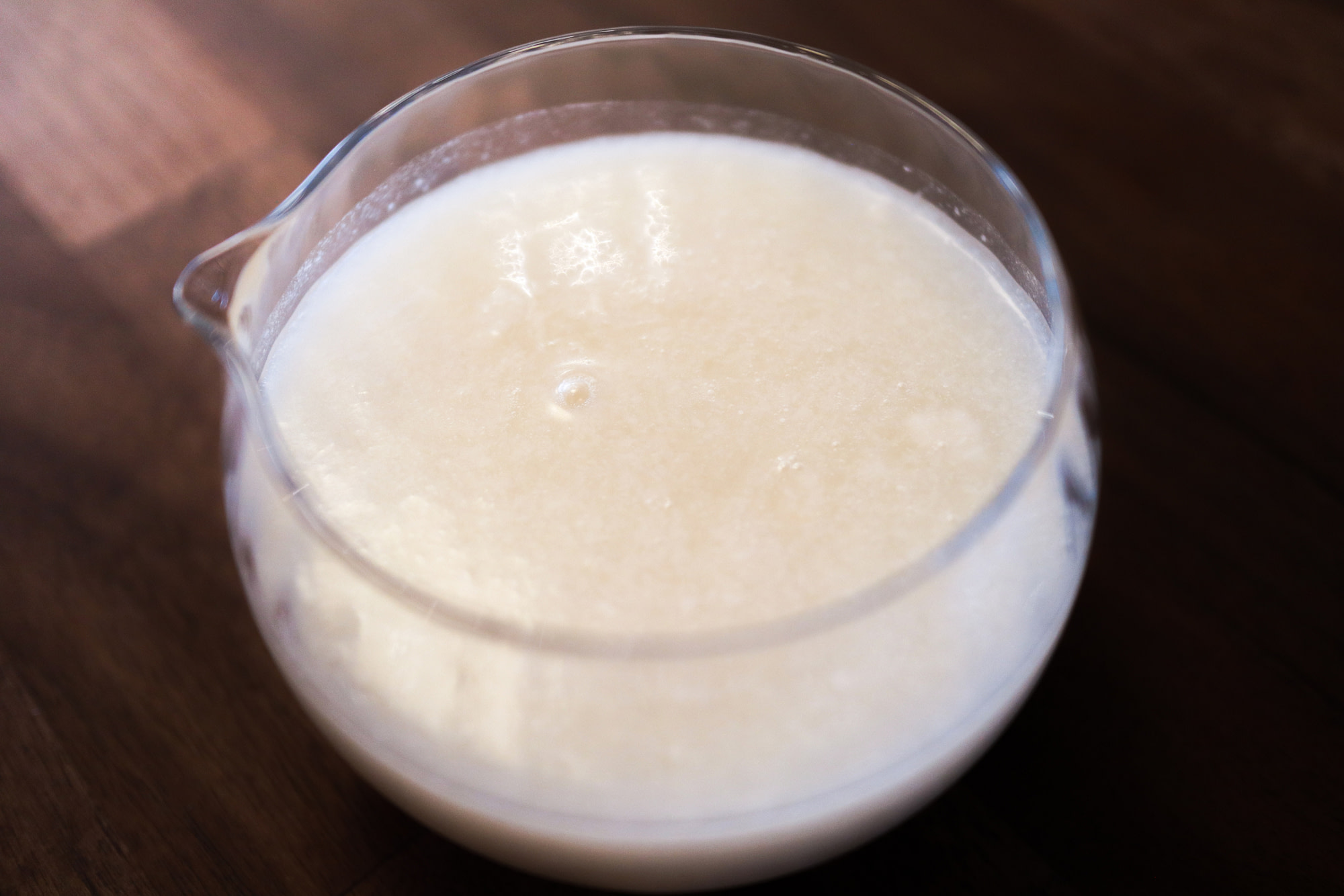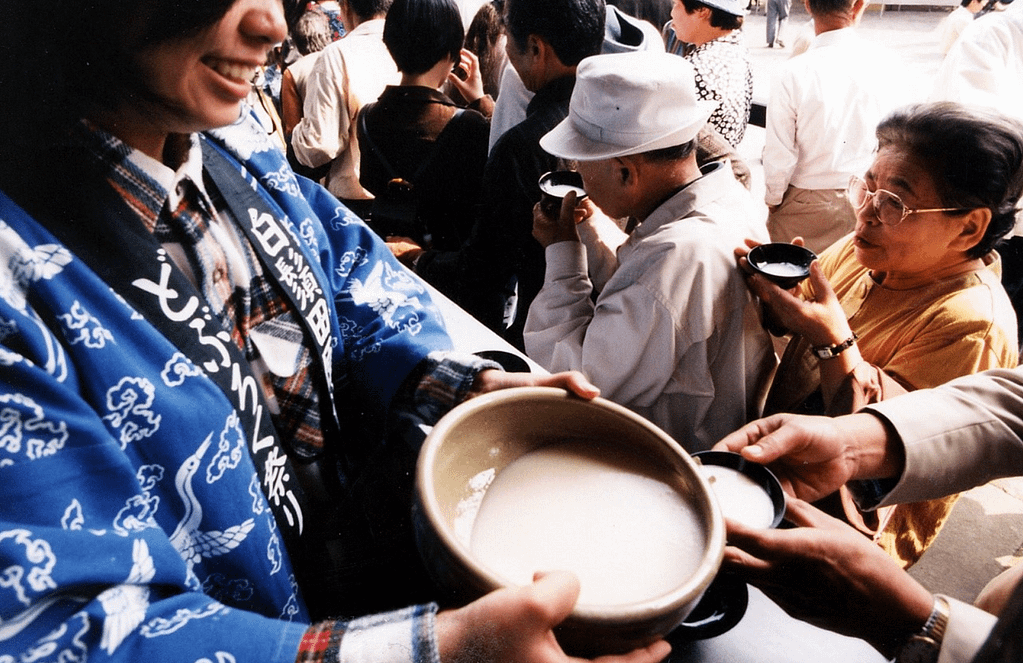Finally, more people worldwide are becoming better acquainted with our beloved brew, sake. Yet the same cannot be said for doburoku! We thought it was time we right that wrong, as you’ll soon come to find that doburoku is one magical (not to mention delectable) drink with a rich and fascinating history.
What is doburoku?
Doburoku is the oldest surviving method of making sake. It is sake as you currently know it, but before it has been pressed, pasteurised, filtered, or diluted. Basically, drinking doburoku is like sticking your glass straight into the fermentation tank – as unadulterated and “raw” as sake can get!
In Shintoism, doburoku is seen as ‘omiki,’ or sacred sake. Unlike modern versions of sake that undergo filtration and pressing processes, doburoku is untampered by humans, thus suitable for the divine. This is why you will see Shinto priests using doburoku as an offering during varying purification ceremonies and weddings.
Luckily, doburoku is not for the exclusive enjoyment of the divine! Did you know that in Japan, it is becoming increasingly popular as the newest trendy health drink?
Doburoku is full of essential amino acids, resistant proteins and enzymes. As a result, there are many health benefits associated with drinking doburoku, including increased metabolism, gut health, plump and radiant skin, and more! It also helps that most doburoku has a lower alcohol content compared to normal sake.
Doburoku’s Downfall and Comeback
For most of its long history, doburoku was the homebrew of choice for farmers who could not afford to purchase sake. Yet this all changed when homebrewing became illegal in Japan for the past few centuries. This has naturally decreased doburoku production and consumption to a significant degree. The remaining bit of doburoku produced today is by a few specialised license holders, which include sake breweries, Shinto shrines and the odd Japanese inn or restaurant.
At this point, you may be wondering why on earth homebrewing ever became illegal in Japan! Well, the answer actually lies with Japan’s dark worn-torn history.
Late 19th century Japan was a completely different nation from what it is today. To give you an idea of how different, “fukoku kyouhei,” or “rich country, strong military,” was the national slogan of the time… yikes!
During such a tumultuous era, the government was doing anything it could to raise revenues to pay for their ever-growing war effort and it heavily relied on breweries to do so. Believe it or not, liquor taxes accounted for over 30% of the country’s national tax income, compared to barely 2% today! When every yen made a difference, having farmers brew and drink their own (untaxable) doburoku became out of the question. And that was the beginning of the end of homebrewing in Japan.
Thankfully, special licence holders capable of brewing doburoku today have started to put increasing emphasis on doing so as a method of cultural preservation. In turn, the public has started to become more curious about this ancient drink and it seems as if it is experiencing an exciting revival! There is no time like the present for anyone wanting to jump in on the doburoku bandwagon.
If this sounds like you and you read Japanese, we highly suggest you head on over to Dobu-Love, a brand new portal that aims to spread doburoku awareness and love. If not, then don’t fret. You can still check out their many doburoku ambassadors who are publishing doburoku content in English too. Or, simply swing by Moto and we will be more than happy to indulge in some doburoku chats with you.
How to drink

To be frank, doburoku is not the most appetising looking drink out there! What you will find is a murky bottle full of rice particles floating around. It looks, and even tastes, like a boozy porridge of sorts.
Yet, as they say, don’t knock it till you try it! Doburoku is the only version of rice alcohol where you can truly appreciate the natural umami and sweetness present in each grain of rice. Its elevated acidity levels, chewy texture and creamy mouthfeel all add to its charm. More often than not, some natural carbonation from the fermentation process remains in the bottle, allowing for a pleasant tingling sensation. Thus, many breweries tend to release their doburoku as a seasonal offering during the warmer summer months.
Now, before pouring yourself that much-anticipated glass, a few words of caution are in order:
- First, gently stir the bottle so that the rice particles are evenly distributed between each pour.
- But when you do, make sure you DO NOT SHAKE the bottle! The bottle will literally explode given the residual levels of carbon dioxide. So remember, gently stir, not shake!
- Lasty, store the bottle upright and in the fridge, as doburoku is a very volatile product prone to spoilage.
Now that we have gotten all of the health and safety warnings out of the way, let’s chat about how best to enjoy this wonderful drink. Of course, you must first try it chilled, neat, and on its own. Then, you can experiment with having it on the rocks, or mixing it with soda or even fruit juices. If you are feeling extra adventurous, try creating your own unique dessert by mixing it with milk, yoghurt or your favourite flavour of jam!
A Must-Try!

When first dipping your toes into the fascinating world of doburoku, we highly recommend you start off with this bottle (pictured) produced by Chiyo Brewery in Nara prefecture, Japan.
The experience of having many of the doburoku currently in the market is closer to that of tucking into a meal, rather than a beverage! You are literally chewing on the rice remains and the flavour can be very hearty. Sometimes too much so, that it can be hard to appreciate. But this is not the case at all for this particular brew.
An inviting, delicate aroma will draw you in. Its flavour resembles yoghurt, but it is not as rich or heavy. Yes, it is creamy and textured… but it still remains extremely fresh. Sweetness and acidity are in perfect harmony. This has to be THE doburoku of choice for any novices out there, an extremely elegant interpretation that won’t scare you away. In fact, you’ll be begging for more!
You can find this gem at Moto, to drink in and for takeaway for a limited time only. We are very much looking forward to having you taste it and perhaps, we will have a new doburoku convert in our hands!

